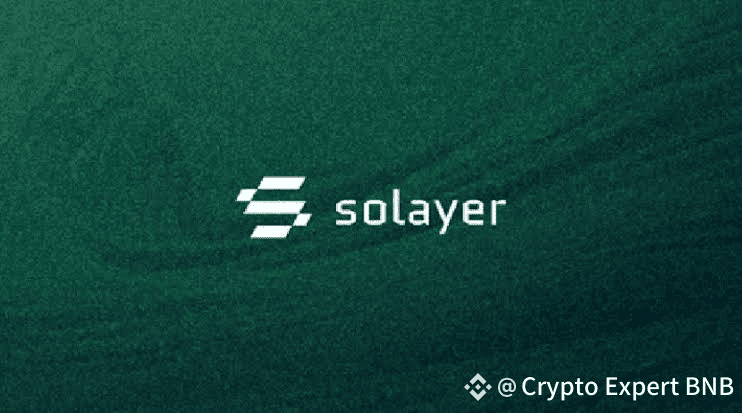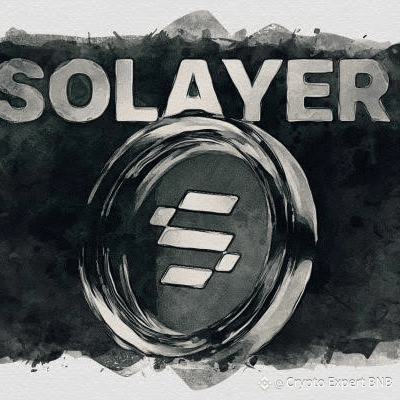Interducing solayer project In the bustling world of blockchain technology, where decentralized finance (DeFi) pulses with innovation, one element stands out as the essential fuel: liquidity. It's what keeps trades flowing smoothly on exchanges, enables borrowing and lending, and powers lucrative yield strategies. Yet, in today's fragmented ecosystem—spanning countless blockchains, Layer 2 solutions, and specialized apps—liquidity often feels like water trapped in isolated reservoirs, unable to quench the thirst of the broader network.
Enter Solayer, a groundbreaking platform designed to bridge these divides with its modular liquidity infrastructure. Think of it as a sophisticated plumbing system for the multi-chain era, channeling liquidity effortlessly between disparate environments. The name "Solayer" cleverly nods to its core philosophy: stacking interconnected "layers" of liquidity in a flexible, building-block manner, rather than cramming everything into one rigid structure. This approach rejects the outdated notion of a single dominant chain, embracing instead a diverse, interconnected future.
📌 Embracing the Multi-Chain Reality
The blockchain landscape is exploding with variety. From Ethereum's optimistic rollups like Optimism and Arbitrum to zero-knowledge powerhouses such as zkSync, and even custom appchains powered by tools like Cosmos SDK or Avalanche's subnets, specialization is the name of the game. We're seeing tailored execution layers for everything from high-speed gaming to AI-driven computations and social platforms. But this diversity comes at a cost: each silo hoards its own liquidity pools, token formats, and transfer mechanisms. A token that's a hot commodity on one network might be a ghost town on another, leading to sluggish trades, high slippage, and missed opportunities.
Solayer flips the script by untethering liquidity from any single chain's constraints. Providers can deposit assets into centralized yet shared modules that span multiple ecosystems. These modules act like universal adapters, allowing smart contracts on various chains to draw from the same pool through secure, low-trust relays and inter-chain communication systems. It's like having a global ATM network where your funds are accessible anywhere, without the hassle of constant transfers.
📌The Powerhouse Token: $LAYER

Driving this ecosystem is the $LAYER token, a multifaceted asset that serves as both the fuel and the steering wheel. Here's how it adds real muscle:
- Staking for Stability: Operators and relay nodes lock up Layer to join the network, creating a strong incentive for honest behavior. Any foul play, like tampering with cross-chain data, triggers automatic penalties through slashing—ensuring the system's integrity.
- Rewarding Contributors: Liquidity providers get Layer tokens as bonuses for feeding the shared pools, turning participation into a profitable venture.
- Transaction Fuel: Apps plugging into Solayer's modules cover costs with $LAYER (or equivalents swapped into it), keeping the economy humming.
- Community Control: Token holders have a say in key decisions, from adding new chain integrations to tweaking fees and rolling out updates.
This tokenomics design isn't just functional; it's a creative blend of incentives that fosters long-term engagement, much like how early internet protocols rewarded node operators to build resilience.
📌 Innovative Routing: The Secret Sauce
What truly sets Solayer apart is its "modular liquidity routing" mechanism—a clever twist on traditional bridging. Instead of shuttling assets back and forth between chains (which clogs networks and racks up fees), Solayer creates virtual pools that intelligently match opposing trades across borders. Imagine a user on Chain X swapping stablecoins for crypto, while someone on Chain Y does the reverse; Solayer's system nets these out internally, only settling the difference when needed. This not only slashes costs but also eases the burden on bridges, making DeFi feel more like a unified marketplace than a patchwork of islands.
Under the hood, Solayer taps into versatile cross-chain messengers such as LayerZero, Hyperlane, or Axelar to keep everything in sync. By staying neutral to these protocols, it can mix and match for optimal reliability and speed—adding a layer of adaptability that's crucial in a fast-changing space. For providers, this means amplified efficiency: deposit once, and your capital works across chains, echoing the concentrated liquidity breakthroughs of protocols like Uniswap v3 but scaled to interstellar levels.
Real-World Applications and Added Value
Solayer isn't just theoretical; it's poised to supercharge practical DeFi scenarios. Picture cross-chain DEX aggregators hunting for the best deals without liquidity walls, or lending platforms where borrowers tap into distant pools seamlessly. In the vibrant GameFi sector, it could make in-game assets tradable across virtual worlds without friction. Even big players in institutional finance might love it, as market makers deploy funds universally minus the logistical headaches.
To add deeper value, consider the broader implications: Solayer could unlock novel DeFi primitives, like automated yield optimizers that roam chains for the juiciest returns, or hybrid derivatives that blend assets from Ethereum and Solana ecosystems. Creatively, envision a future where artists mint NFTs on a low-cost rollup but sell them with liquidity backed by mainnet whales—democratizing access and sparking cultural crossovers.
Of course, no innovation is without hurdles. Fragmentation risks like oracle failures or relay hacks loom large, but Solayer counters with a robust hybrid security model: staked Layer for economic deterrence, zero-knowledge proofs for verifiable transactions, and community governance as a safety net for disputes. This mirrors the modular ethos, letting components evolve independently while maintaining harmony.
## Building Toward an Invisible Blockchain Era
Strategically, Solayer positions itself as the go-to liquidity plugin for emerging modular architectures. With projects leaning on Celestia for data storage or shared sequencers for transaction ordering, liquidity remains the missing link. Solayer fills that void, offering plug-and-play integration that could become as standard as USB ports in tech.
Economically, it's engineered for virality: More apps mean richer yields for providers, deeper pools attract more apps, and the cycle spins onward. This flywheel effect is key in a winner-takes-most liquidity game.
Looking ahead, Solayer's triumph could render chains "invisible" to users—trades zip through with lightning speed and minimal fuss, regardless of the backend. It's the connective glue for a truly borderless DeFi, where the focus shifts from tech plumbing to user empowerment. In a world craving efficiency, Solayer isn't just building layers; it's weaving a tapestry of interconnected possibilities, one fluid transaction at a time.$LAYER #BuiltonSolayer @Solayer



